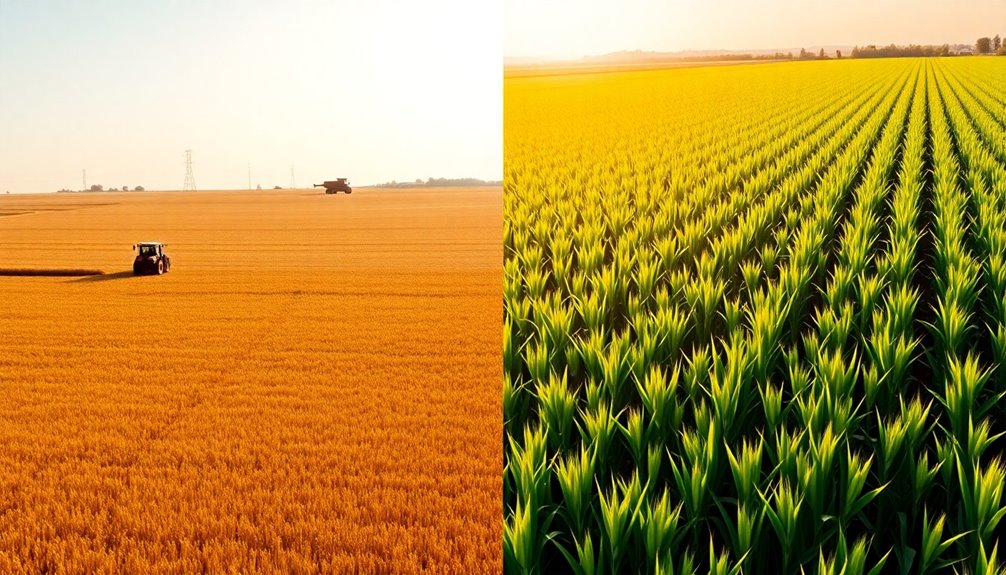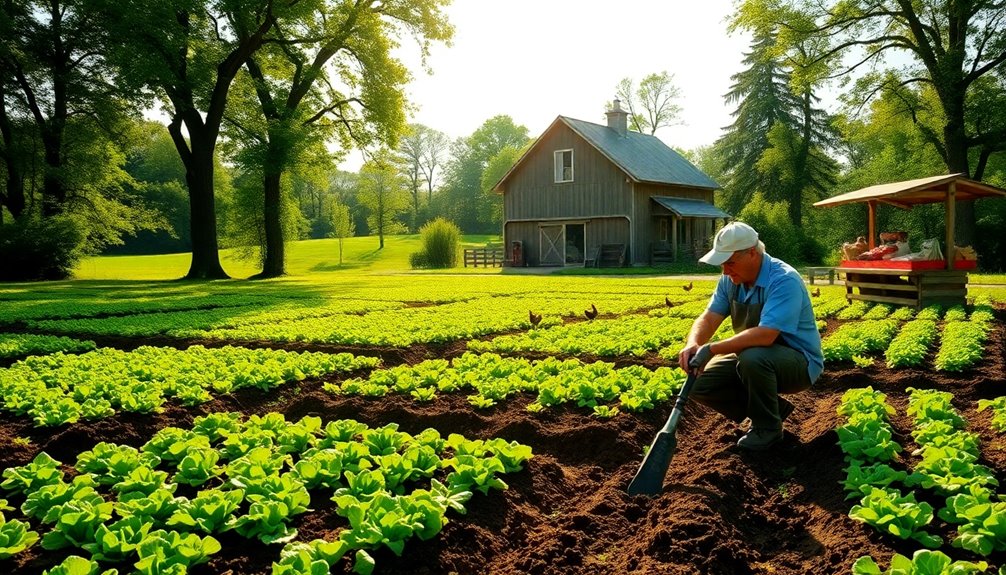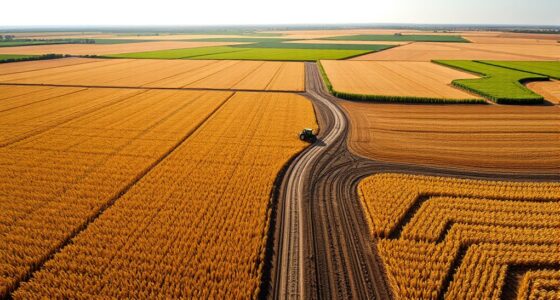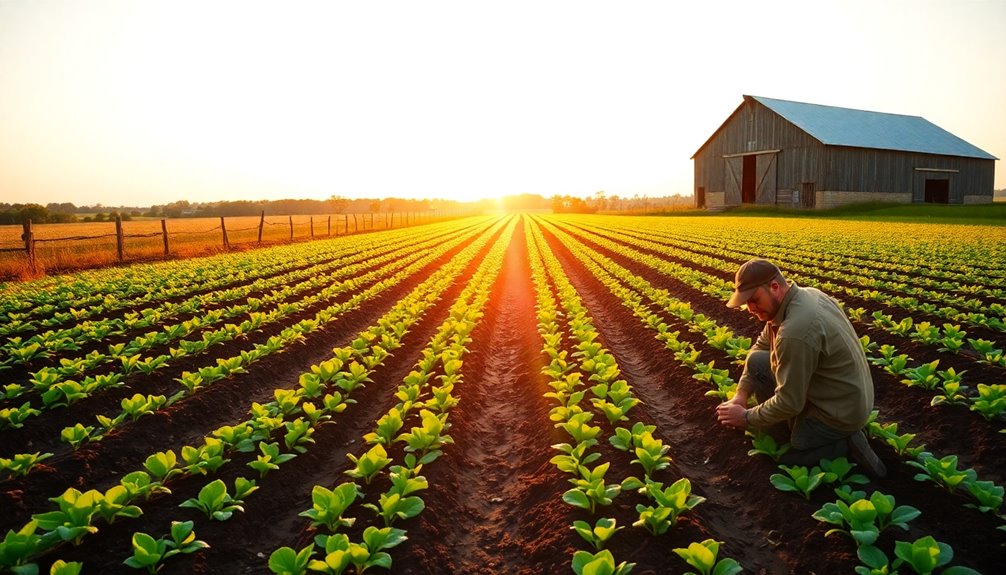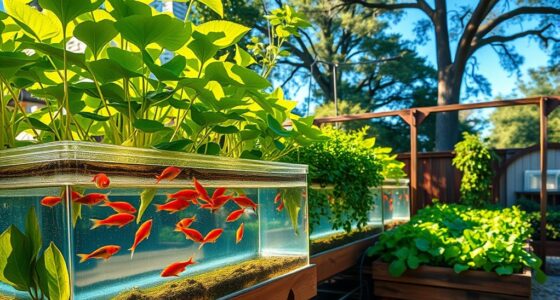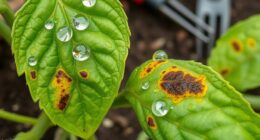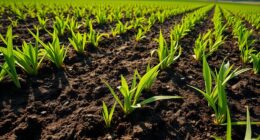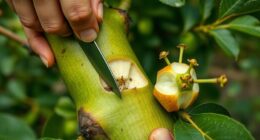Grain farming can be both intensive and extensive. If you're into intensive farming, you're using high inputs like fertilizers and technology to boost yields, which often results in quicker financial returns but can harm the environment. On the other hand, extensive farming covers larger areas with lower inputs, focusing on natural methods and sustainability, yielding less per acre but promoting biodiversity. Each method has its pros and cons, so choosing depends on your goals and resources. If you explore further, you'll uncover more about the right approach for your farming needs.
Key Takeaways
- Grain farming can be either intensive or extensive, depending on the inputs and management practices used.
- Intensive grain farming utilizes high inputs of fertilizers and pesticides to maximize yields per unit area.
- Extensive grain farming focuses on lower inputs, relying on natural conditions and crop diversity for sustainable production.
- Economic viability differs; intensive methods offer quicker returns but pose higher environmental risks, while extensive methods promote long-term sustainability.
- Local conditions, market demands, and environmental assessments influence the choice between intensive and extensive grain farming practices.
Definitions of Farming Types
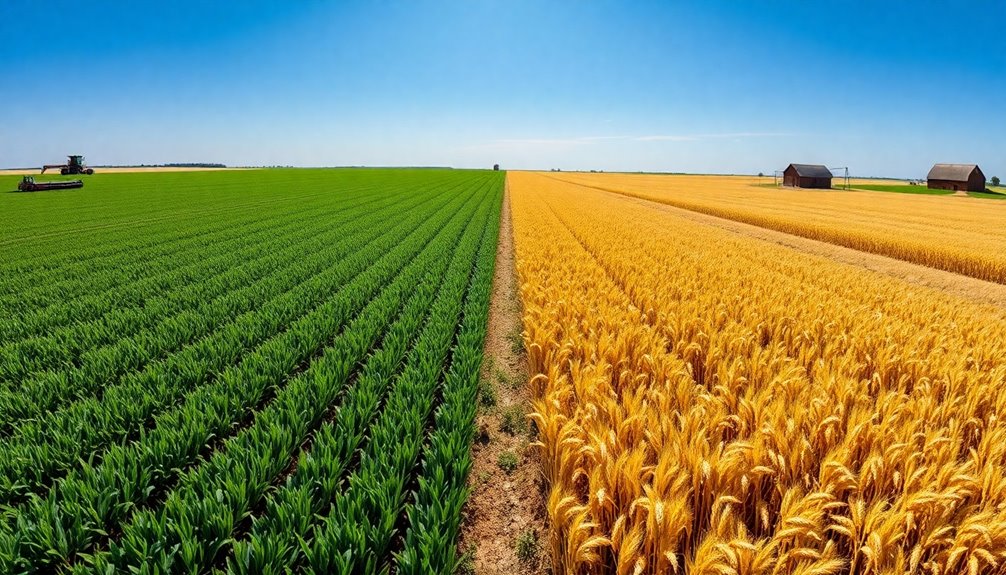
When discussing farming types, it's essential to understand the key differences between intensive and extensive farming.
Intensive farming, often referred to as high-input farming, relies on significant labor, capital, and technology to maximize yields per unit area. You'll find this method frequently using chemical fertilizers and pesticides to enhance productivity, especially in densely populated regions.
On the other hand, extensive farming covers larger land areas with lower inputs, focusing on natural grazing and minimal resource use. While this approach may yield less per unit area, it can result in higher overall outputs due to the vast land coverage.
Characteristics of Extensive Farming
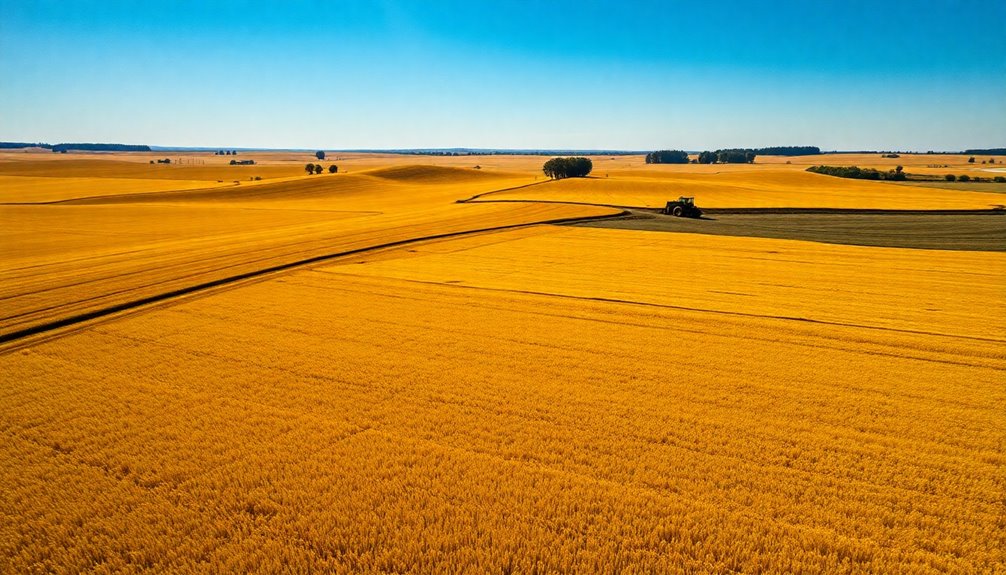
Extensive farming stands out for its low-input requirements and broad land coverage, which allows farmers to cultivate large areas with minimal resources.
This approach often leads to lower productivity per unit area, but you can achieve high overall yields thanks to the expansive land.
Extensive farming promotes crop diversity and enhances ecological health, contributing to the resilience of your farming system.
When it comes to livestock, animals typically have access to large grazing areas, letting them exhibit natural behaviors.
This results in a lower environmental impact compared to more intensive methods.
Plus, extensive practices usually require less capital investment and labor, making them a more sustainable choice for long-term resource use.
Characteristics of Intensive Farming
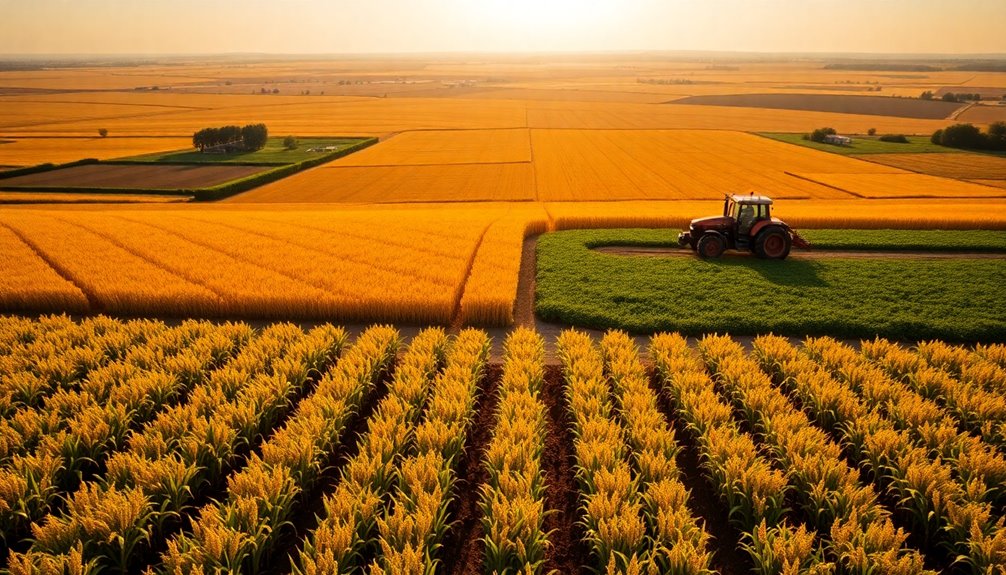
In intensive farming, you'll notice a heavy reliance on high resource utilization, from advanced technologies to chemical inputs.
This approach often leads to higher confinement and production levels, but it also raises significant environmental impact concerns.
Understanding these characteristics is essential as they shape the future of grain farming.
High Resource Utilization
Intensive grain farming thrives on high resource utilization, maximizing inputs like fertilizers and pesticides to achieve impressive crop yields per unit area.
You'll often see advanced technologies, such as precision agriculture and GMOs, employed to optimize production efficiency. This method demands a substantial capital investment in infrastructure and equipment, along with ongoing operational costs to sustain high productivity levels.
Continuous cropping systems keep agricultural land in use year-round, reducing fallow periods and further increasing resource utilization.
However, the reliance on chemical inputs and intensive management practices can raise concerns about soil degradation, water pollution, and the long-term sustainability of agricultural ecosystems. Additionally, practices that enhance soil health, such as incorporating soluble fiber from chia seeds, can mitigate some of these negative effects.
Balancing these factors is essential for successful and responsible intensive farming.
Confinement and Production
High-density planting and considerable chemical inputs define the characteristics of intensive grain farming, allowing farmers to achieve impressive crop yields per unit area.
This approach focuses on cash crops, often utilizing advanced technologies like GPS and GIS to optimize planting and irrigation.
By employing monoculture practices, you can increase food production considerably, with yields two to three times greater than extensive methods.
However, this confinement of grains to specific areas can lead to soil degradation and nutrient depletion.
To counteract these issues, you'll need to implement careful soil management practices.
While intensive farming boosts productivity, it also requires a commitment to maintaining the health of your land for sustainable future yields.
Environmental Impact Concerns
The environmental impact of intensive grain farming raises important concerns that you can't ignore.
The heavy use of chemical inputs like fertilizers and pesticides often leads to soil degradation, making the land less productive over time. Additionally, the confinement of livestock limits their natural behaviors, raising significant animal welfare issues.
You should also consider that these farming practices contribute to air pollution through volatile organic compounds and greenhouse gases released by machinery and fertilizers.
Furthermore, relying on monoculture reduces biodiversity, making ecosystems more vulnerable to pests and diseases.
Finally, the high resource use, particularly water, can deplete local water sources and harm surrounding ecosystems, especially in arid regions.
Addressing these concerns is essential for sustainable farming practices.
Yield Comparisons
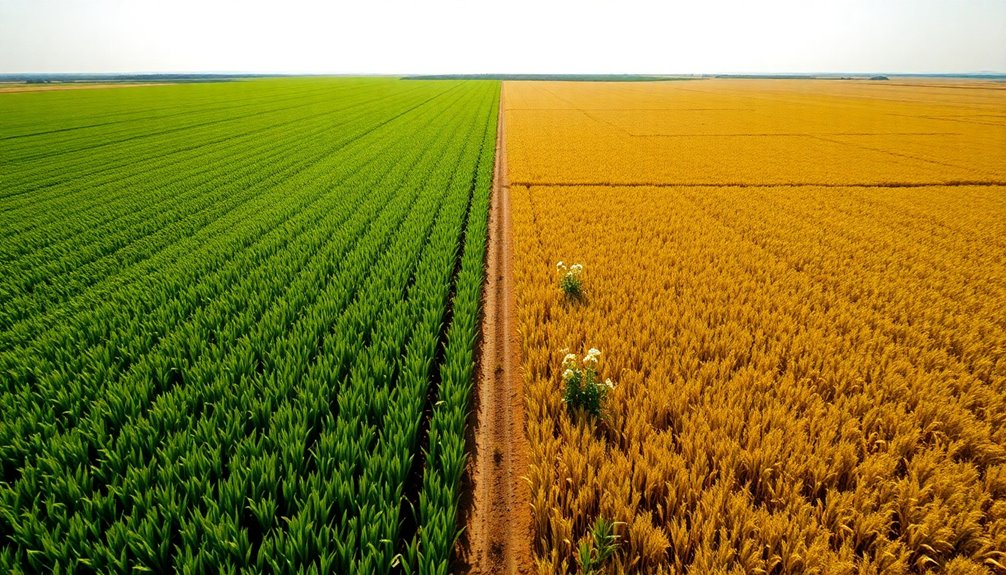
When comparing yields in grain farming, you'll notice that intensive methods often deliver considerably higher outputs per acre thanks to advanced technologies and inputs.
However, extensive farming, while yielding less per unit area, can take advantage of larger land spaces, leading to impressive overall production.
Understanding these differences helps you evaluate which approach aligns with your farming goals and sustainability priorities.
Intensive Farming Yield Advantages
Often, intensive grain farming yields considerably more per unit area compared to extensive methods, thanks to advanced technology and high input usage. Studies show you can achieve 50-100% higher yields with intensive farming, utilizing synthetic fertilizers and pesticides that boost crop growth.
For instance, corn yields in the U.S. average around 180 bushels per acre under intensive systems. Additionally, practices like monoculture maximize harvest efficiency, though they come with risks like pest outbreaks.
Data indicates that intensive farming can produce up to 4-5 times the yield per hectare compared to extensive farming, which often results in a lower yield due to reliance on natural conditions.
Irrigation further enhances productivity, allowing for consistent year-round production.
Extensive Farming Yield Characteristics
Extensive farming typically yields between 1 to 2 tons of grain per hectare, considerably lower than intensive methods. However, this approach covers larger land areas and relies heavily on natural conditions.
While individual yields may be lower, the total output can still be significant, contributing to yield stability over time.
Key characteristics of extensive farming include:
- Crop diversity, enhancing resilience against pests and diseases
- Sustainable practices like crop rotation and minimal tillage
- Dependence on environmental factors, including soil quality and climate
- Potential for yields to match intensive systems under ideal conditions
Environmental Impacts
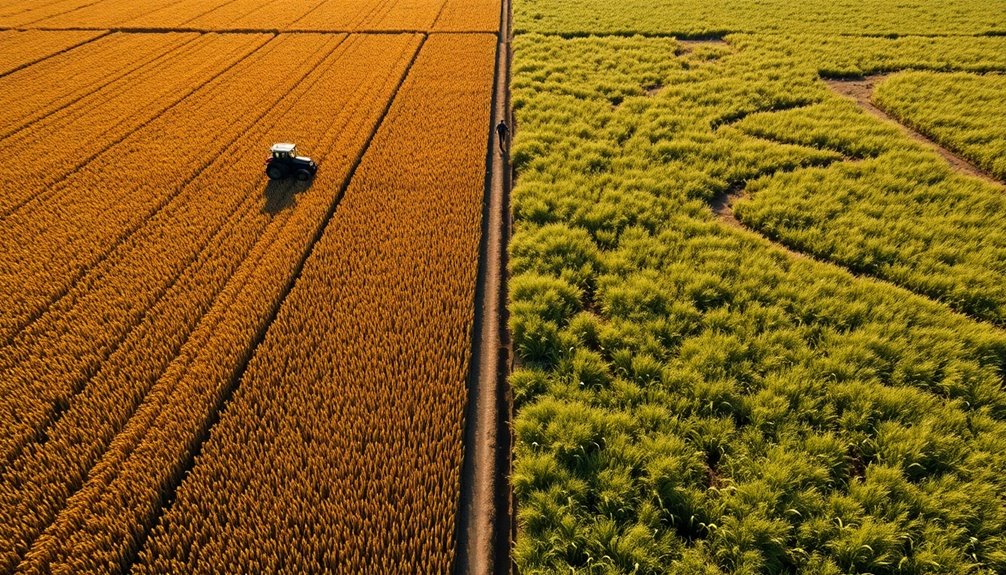
Many people may not realize the significant environmental impacts of grain farming methods.
Intensive grain farming relies heavily on chemical fertilizers and pesticides, which can lead to soil degradation and water pollution. These practices often prioritize high yields but can disrupt ecological balance and increase greenhouse gas emissions from machinery and fertilizer production.
On the other hand, extensive farming methods promote biodiversity and enhance soil health through crop rotation and minimal chemical use. While extensive farming may yield less per acre, it supports carbon sequestration in the soil and reduces dependence on fossil fuels.
Ultimately, the choice between intensive and extensive farming directly affects the environmental impacts we face today and in the future.
Sustainability Considerations
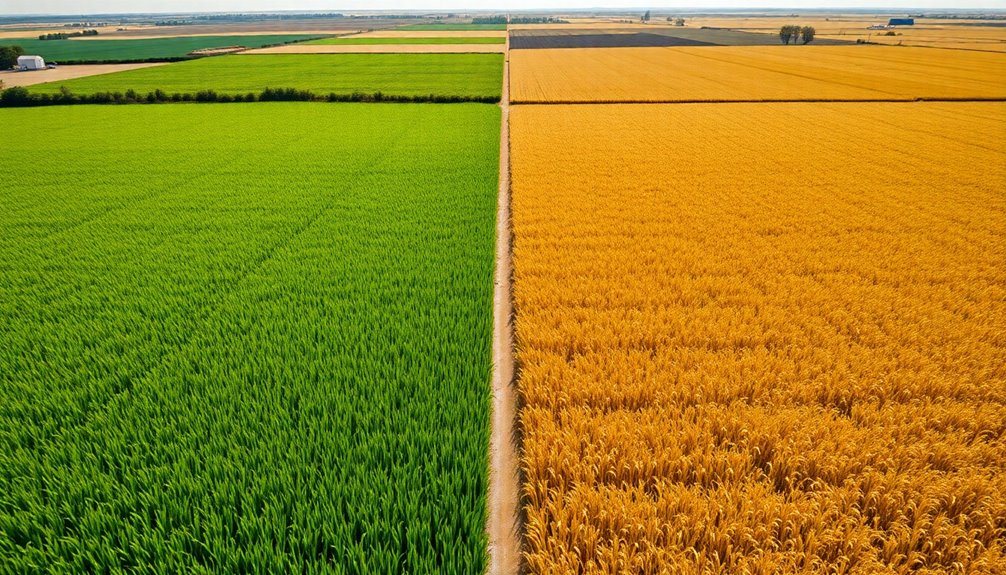
In grain farming, sustainability hinges on the methods you choose. By understanding how your approach affects the environment, you can make informed decisions that balance yield with ecological health.
Here are some key sustainability considerations:
- Crop rotation enhances soil health and reduces chemical reliance.
- Diversified planting promotes higher biodiversity and resilience.
- Water management guarantees resources are used efficiently, safeguarding future yields.
- Soil health practices prevent degradation and support long-term productivity.
Choosing extensive methods often leads to more sustainable outcomes compared to intensive systems.
While intensive practices may boost immediate yields, they can harm the environment, leading to soil degradation and higher emissions.
Prioritize sustainability in your grain farming to protect both your land and future productivity.
Choosing the Right Approach
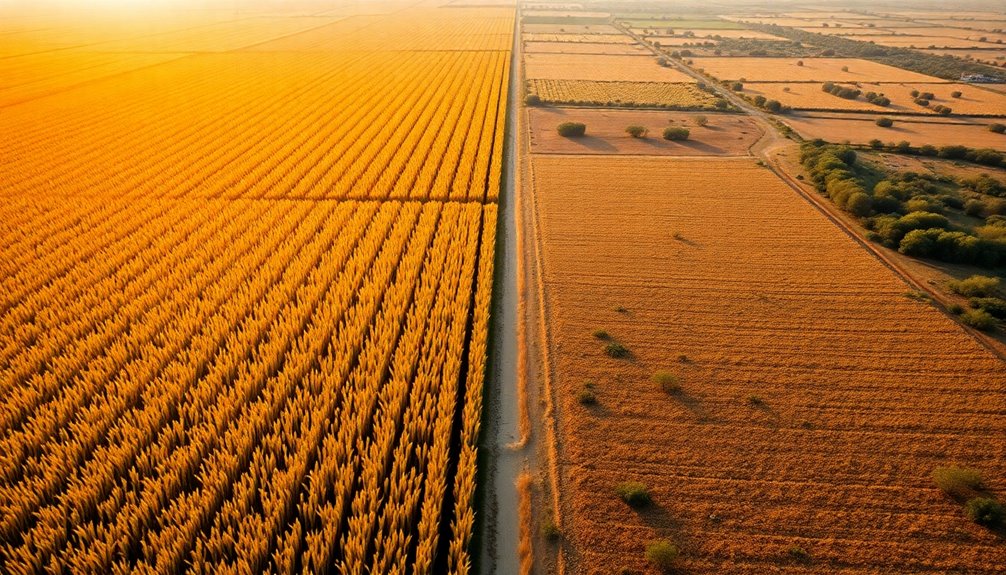
Considering the unique characteristics of your land and goals is essential when choosing between intensive and extensive grain farming.
If you're in a densely populated area with limited arable land, intensive farming might be your best bet, maximizing yields through high inputs of fertilizers and pesticides. However, be mindful of environmental concerns that can arise from such practices.
On the other hand, if you have access to larger plots of land, extensive farming could be more suitable. This approach promotes biodiversity and allows for natural soil replenishment with lower inputs.
Ultimately, your decision should reflect sustainability goals, economic viability, and the specific conditions of your land to guarantee long-term success in grain farming.
Frequently Asked Questions
Are Grain Crops Intensive or Extensive?
When you look at grain crops, you'll see they can be grown using both intensive and extensive methods.
If you're in a densely populated area with limited land, you might use intensive farming practices to maximize yields, relying on fertilizers and technology.
On the other hand, if you're in a region with abundant space, extensive farming practices allow for larger land areas and lower inputs, focusing on crop rotation and natural soil fertility.
What Is the Difference Between Intensive and Extensive Farming?
Intensive farming focuses on maximizing crop yields in a smaller area, using high levels of inputs like fertilizers and technology.
You'll see practices like monoculture and confined feeding operations.
In contrast, extensive farming covers larger plots with lower inputs, promoting natural grazing and crop diversity.
While intensive methods can boost productivity per unit, extensive farming often leads to greater overall yields due to its expansive land use and focus on ecological balance.
How Can I Tell That Agriculture Is Extensive or Intensive?
When you stroll through fields, look for signs of farming practices.
If you notice high-density crops, heavy machinery, and a reliance on chemical inputs, you're likely in an intensive farming area.
Conversely, if you see diverse crops, crop rotation, and lower tech usage, it's probably extensive farming.
Think of it like comparing a bustling city to a peaceful countryside; each has its own rhythm and approach to agriculture.
What Is Considered Intensive Farming?
Intensive farming focuses on maximizing crop yields from a small area through high-density planting and heavy use of chemical inputs like fertilizers and pesticides.
You'll notice it often employs advanced technology, including irrigation and GMOs, to boost productivity.
This method typically involves monoculture, where one crop dominates the landscape, leading to higher outputs but raising concerns about environmental impact.
It requires significant labor and capital investment, making it resource-intensive.
Conclusion
In the world of agriculture, choosing between grain farming methods is like picking a path through a dense forest. Each approach—intensive or extensive—offers unique benefits and challenges. While extensive farming spreads its roots wide and deep, intensive farming focuses on maximizing yield in a smaller area. Ultimately, the right choice depends on your goals, resources, and commitment to sustainability. By understanding these differences, you can cultivate a thriving future for your farming endeavors.

